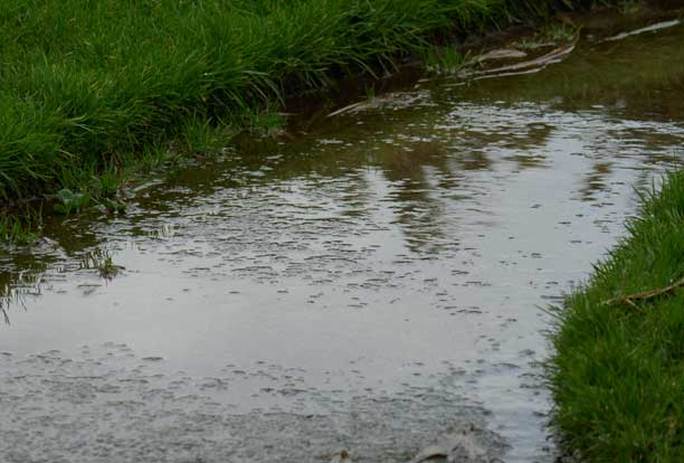International travel is actually going on a long walk. You walk from your car to the bus stop in the long-stay car park, then you walk from the drop-off point to the machine that scans your passport and divulges a boarding card. Then you finally get rid of your suitcase, shuffle through security - where they take your belt and shoes; doesn't that just capture the romance of travel? - and then finally it's wandering through the shops, barely anywhere to sit down unless you buy something, before you embark on the long trek to Gate B6. Most of that is walking, sometimes on flat escalators (travelators?), but sometimes it involves train rides. Miles and miles of distance just to start your journey.
Hours later, the plane touches down, trundles around the runways for a while, and then docks at a gate that's several miles from passport control and baggage reclaim. You walk down the same long, grey, metal corridors, occasionally passing small outposts of high-street coffee chains, or maybe those were before the flight; occasionally seeing, through glass, walkers like you, heading in the opposite direction. More travelators, escalators, lifts, posts to stop you taking trolleys beyond certain points, mile upon mile of grey, grey corridor until finally - no. Not there yet. More grey corridors. Advertisements in which banks try to be catchy about how clever they are. Pictures of national monuments.
When, after several hours' hard walking, you arrive at whatever comes next, you can't get to it without navigating a waist-high labyrinth of retractable crowd-control barriers. You know the things? Posts with tape stretched between them. You walk ten paces north, u-turn, ten paces south, ditto, ditto, and instead of digging up treasure at the end of this, you've walked two back-and-forth miles across ten paces' worth of space, for the pleasure of standing behind a line on the floor until some uniformed person behind glass beckons you forward to stand on two painted feet on the floor while he/she conveys by facial expression what he/she thinks of your passport.
What if the people who faked the moon landing had gone into airport design? No, wait - what if the people who make the ads had been put in charge of making the reality? Instead of traipsing for miles to be regarded with suspicion at the end, we'd take whatever sedative it is that makes people sleep in airline seats with blissful smiles on their faces, and we'd be passed through the system with our baggage. Oh, bliss, to be a suitcase and travel in ignorance. And I haven't even begun to plumb the depths of economy class. It has been easy, this time, to break the long walks with ten hours' then nine hours' rest in a reclining chair with a cinema screen, blankets and a bell to summon a team of immaculate young Korean women with access to free champagne.
Nor has it been overly problematic to settle in the business lounge, grazing on the buffet during the stop-over in Seoul, dozing in the reclining chairs. And how easy it has been to acquiesce in a system whereby everybody else gets the cramped seats; everybody else gets to compete for a place to sit down, to pay for their drinks, to queue, while we sit there discussing the novel beer tap that fills the glass from underneath - put the glass on the tap, which is flush with the surface of the bar, and watch it fill up again. Clever of somebody to think of that - a glass with a one-way thing - What's the word? Valve? - in the bottom: beer goes in and stays in until you drink it.
But then, the walking. Oh, the walking. The suitcase again, rolling along on its little wheels, hitting every bump, unwieldy; the airport itself a long corridor merging abruptly with a shopping mall and a rail terminal; the coaches to the hotels ... down there, left at the end, and then ... walk. And the entrance to your hotel is ... see that pedestrian overpass? That'll take you over the railway track...
I've lost track of times zones and hours spent in the air, but this much I can tell you: my bedroom in Sydney, Australia is at least a ten-mile hard walk from my bedroom in Falmouth, Cornwall.
To my extreme left, after the footbridge across the water, is a ferris wheel, and then - inside the glass - the escalators to and from the next level up. Here comes another water taxi and that's an Australian flag. This post is the second of two cheats - the first went in under the picture last week - and it comes from the same place. I wrote it back in August 2018 and posted it on the Second Website. It should be here, so - it is here. Lightly edited, but I haven't redone the calculations. All up to date as of several months ago. I think my point would be made more strongly if I did redo the calculations, but - long flight, busy week, actually very interesting week, and to get straight to the key stumbling block - nuh.
So here goes. Think back to August.
Pity we can’t do a simulation of the Second World War, but with added social media. The British government declared war on Germany on 3rd September 1939. What happened next was the “Phoney War”, a period of some eight months in which hardly anything warlike happened. I could imagine the petitions against the war, the Facebook groups, the political opposition to the prime minister in particular, Chamberlain, and the Conservative (Tory) government in general*.
Eight months after the British declaration of war, on 10th May 1940, Germany invaded Belgium, Luxembourg and the Netherlands. Chamberlain resigned on that day, having survived a vote of confidence** so narrowly that his position had become untenable. The establishment candidate, Lord Halifax, did not become prime minister; the outsider, Churchill, did.
The historical parallels with today are wearisome. Yes, the British made a big decision vis-a-vis Europe a little while back; yes, there hasn’t been much progress on anything; yes, the government isn’t making friends and influencing people with its handling of today’s big issues; oh, and yes, there’s a conspicuous outsider whose every move is analysed in terms of whether or not he’s going to take over as prime minister and, er, save us all.
Idling around on social media the other day, I came across an argument on Facebook about Brexit. Yes, they still have those. Brrrzzz is either a bad idea or a very bad idea and the Brexiters are going to get their come-uppance because young people are going to win the People’s Vote and thus, er, save us all. So there. That was pretty much the whole of it. I see these things occasionally, and I get the sense that most of the Brexiters (sure it used to be Brexiteers) have left the other lot to get on with it, and gone home. They know what they think. Minds are closed on both sides.
Anyway. I thought about that WW2 simulation, and then I thought: I wonder where we’d be now. The Brrrrzzzz Vote happened on 23rd June 2016. From that date to now, allowing for my maths ability and a degree of vagueness about what day it is today anyway, a grand total of 779-ish days have passed. 779 days, and we’re still arguing over Chamberlain’s declaration of - sorry. Over the result of (let’s call it) David Cameron’s Referendum.
779 days into the Second World War would have been, let me see, somewhere around 22nd October 1941. First anniversary of the end of the Battle of Britain coming up, German forces at the gates of Moscow, maybe beginning to feel a bit chilly; US and Japanese governments preparing for peace talks in early November (Japanese government also looking at preliminary plans for the bombing of Pearl Harbour on 7th December, I guess). Battle of the Atlantic well under way.
779 days into the Second World War, a lot had happened and was still happening. 31st October 1941 was also the last day of carving at Mount Rushmore, I see. Interesting. Life continues, even in wartime. None of this proves anything and I’m not trying to demonstrate anything - and yes, I could mention a lot else that happened in 1941. I’m just glad that we’re here, now, 779 days in, nobody trying to kill us, still arguing over precisely how catastrophic the declara- sorry, the Brexit vote was.
At least we’ve got time for it, eh? We’d have been a lot busier in 1941, 779 days into the Second World War. Aren’t we lucky that we’ve got such a relatively benign Worst Catastrophe Ever on our hands? Whatever the trade terms, at least nobody’s going to be trying to sink our cross-channel ferries like they did the Atlantic Convoys.
*The National Government of the time was led by the Conservative majority in the House Of Commons.
**Imagine the clamour around of the Norway Debate in the House of Commons. If you’re me, you’ll find Wikipedia’s account of the debate itself fascinating.

